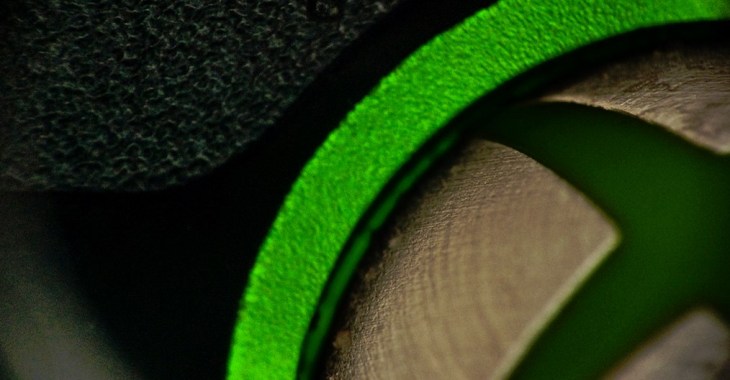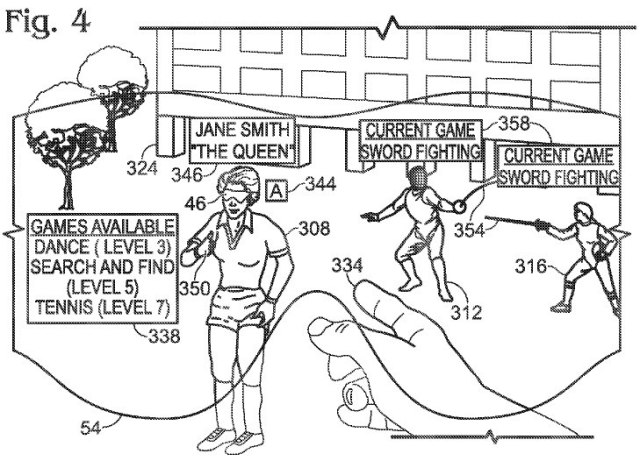Microsoft has filed a patent application for a multiplayer gaming headset, which may include voice interaction, eye-tracking, facial recognition technology, and a number of accelerometers and gyroscopes to track the head movement of the wearer.
Presuming that the patent application isn’t a defensive measure, it could allow for an extension of the Xbox platform not only into new hardware, but also new locations. Drawings associated with the patent application show the user out and about, hardly confining them to the Xbox’s living room domain.
As GameSpot notes, the patent application has a “focus on natural speech,” something that is not unlike what Microsoft has been working on with both Windows Phone and Kinect.
The patent application drips with multiplayer gaming references: The gist of the headset isn’t to create a new computing platform for Windows, but instead to allow for greatly expanded gaming between several parties regardless of their location. The images are predictably goofy:
The patent is perhaps most interesting in that is shows that Microsoft is actively at least thinking, if not working in the wearable technology space. In terms of new hardware directions, strapping computers and sensors onto your body is becoming a real business.
From the Nike FuelBand, to Google Glass, consumer-facing technology that augments your normal daily function is a rising hardware segment that I hesitate to call a niche given its ascendancy.
It’s worth noting that the device Microsoft has dreamed up in the above application does bear some similarity to the Oculus Rift headset that is currently up for pre-order. Like the would-be Microsoft device, the Oculus is also a gaming headset which extends the gaming experience by applying wearable technology directly to the user’s head. It’s worth noting, however, that the Oculus is a virtual reality experience, whereas the Microsoft device appears to be more focused on augmented reality.
The patent application doesn’t place a computer directly onto the glasses the user will wear, indicating instead that they would interface with gaming content via a connection to an external server; perhaps, say, an Xbox One unit at home. That’s a rival vision to Google’s Glass strategy, and one that almost demands stronger general wireless connectivity than we have in the United States. Still, it’s a statement of sorts as to where this sort of technology may head.
Will we see this in time for Christmas 2013? Heavens, no. But where there is a patent, there is a potential product, and this one looks mighty fine.
Top Image Credit: Luke Hayfield

